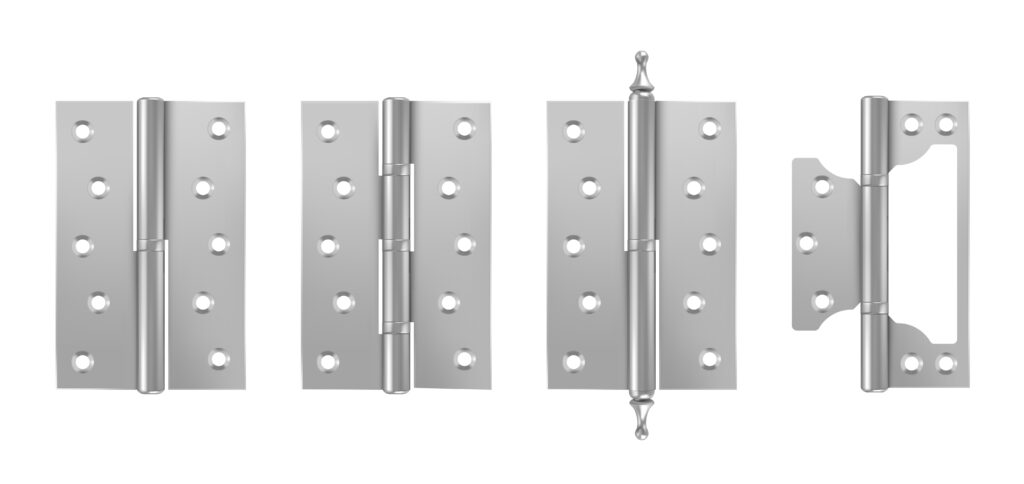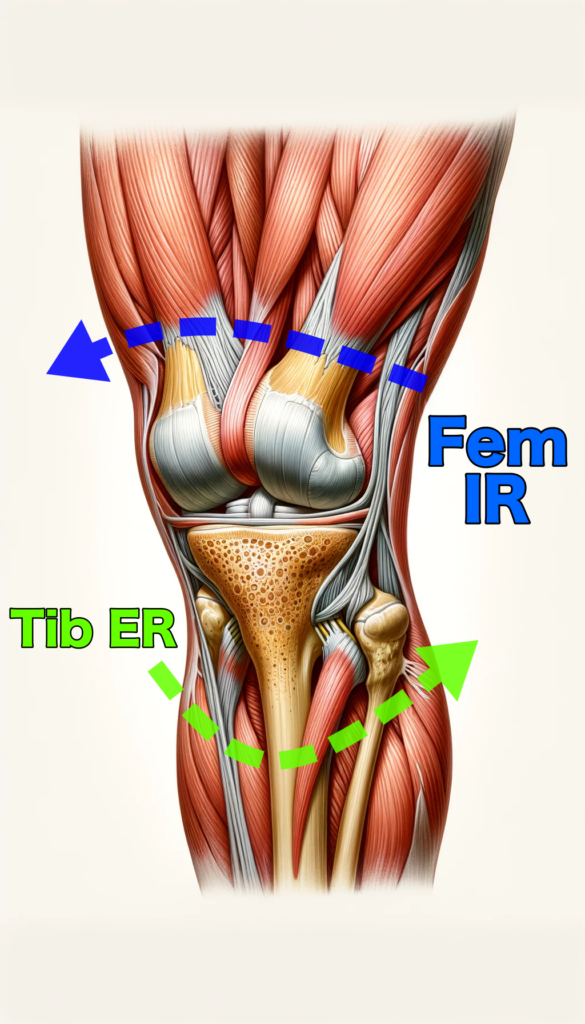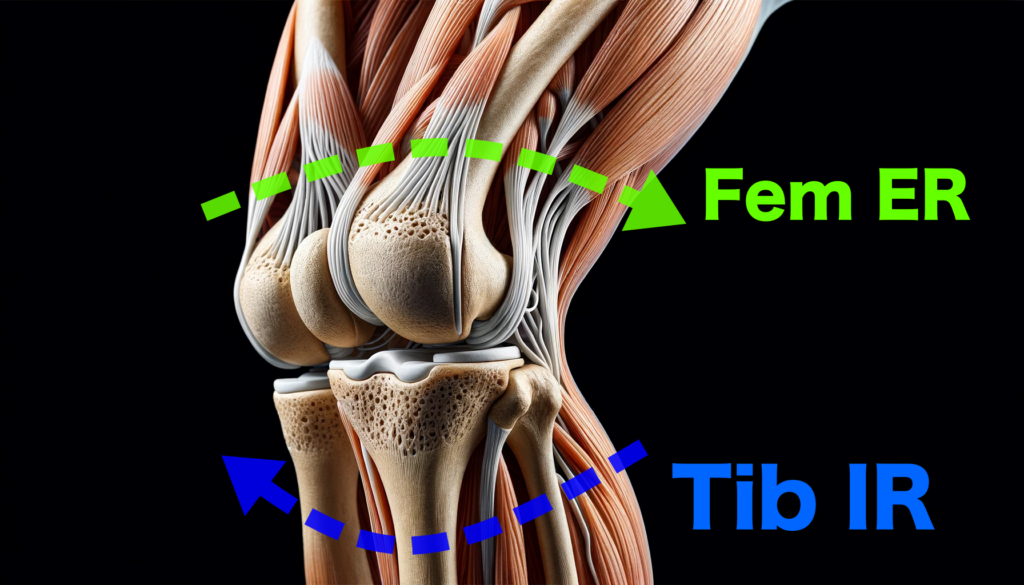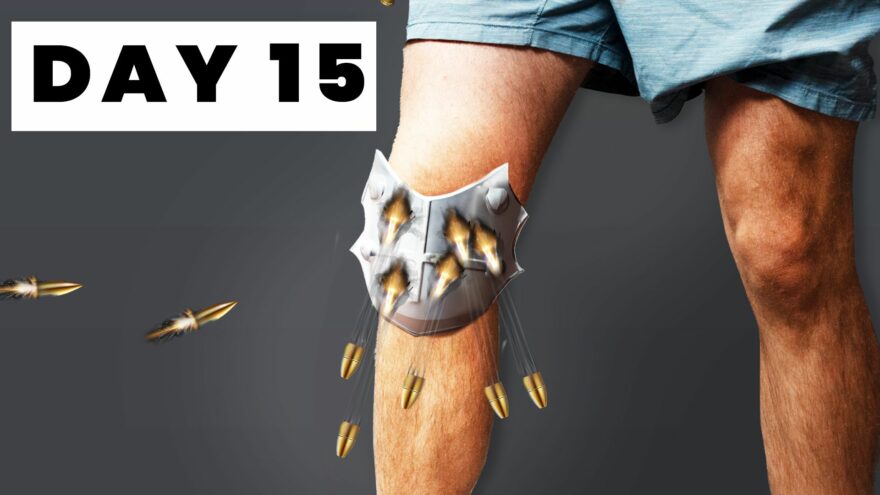Table of Contents
Make Your Knees Stronger Than Ever
Knee pain, stiffness, or instability can make your daily activities drag. Are you doomed?
NO!
You need a specific approach. One that improves both your knee health AND performance.
One that makes ’em bulletproof.
This guide will show you 4 steps you can take right now to make your knees stronger than ever before.
Let’s dive in.
Step 1: Achieve Full Knee Range of Motion
Want healthy knees? Then you need to maximize your knee range of motion.
Research shows that full motion boosts muscle growth and hypertrophy. But it’s not as simple as bending and straightening your knee.
That’s because your knee is NOT a hinge joint. ?

Your knee actually rotates with bending and straightening. Most people overlook this fact. No wonder most knee mobility drills don’t work.
That changes today.
Knee Rotation
There are 2 opposing rotations with bending and straightening:

Knee extension (straightening) = Tibial (shin) external rotation + Femoral (thigh) internal rotation
This rotation is called the screw home mechanism.
When you bend the knee, you must rotate in the opposite direction.

Knee flexion (bending) = Tibial internal rotation + Femoral external rotation
Exercises to improve these ranges must incorporate these rotations.
Knee Mobility Exercises
I like this drill for knee straightening:
- Foot flat.
- Weight on the inner heel and big toe base
- Use bands to pull femur and tibia into those rotation (do opposite in the video)
- Inhale and straighten the knee, then exhale and bend it
- Repeat for 2 to 3 sets of 10 reps.
This one works great for knee bending:
- Use a foam roller under your tibial tuberosity (the bony point below your patellar tendon).
- Roll your leg out to the side. Driving tibial IR
- Quiet nasal inhale and rock back
- Soft mouth exhale and come forward.
- Perform 2 to 3 sets of 10 reps for two to four weeks.
Step 2: Strengthen Through the Full Range of Motion
Despite what your doctor from the 70s told you, deep squats are safe AND beneficial for your knees.
When you compare full squats to parallel squats, guess which strains the knee cap less? Full of course! There are greater compressive loads at the patellofemoral joint with parallel squats.
But that doesn’t mean you are ready to deep squat right away. Chances are, you have limited mobility to go that deep.
Until now.
Deep squat progression
To squat deep, you need to expand the posterior upper pelvis. This area opens up hip external rotation, which you need for deep squats.
You can start this process by working within 0-60º of hip flexion. This wall squat works great for that:
- Stand a foot length away from a wall.
- Contact the PSIS (the bony part above the pelvis) onto the wall.
- Keep weight on both inner heels and big toe bases.
- Maintain points and perform a quarter squat.
- Arms out in front of you at 60º shoulder flexion
- Quiet nasal inhale
- Soft mouth exhale
- Maintain this position for 5 sets of 5 breaths, twice daily.
You can then progress depth with a goblet squat hold:
The cues are similar to the last move. Keys I want you to think about:
- Maintain foot contacts
- Arms DO NOT move as you lower
- Perform 5 sets of 5 breaths, twice daily.
Once you’ve CRUSHED the holds, then you can make this squat dynamic:
Again, the cues and contact points work just like the prior exercises. Here are a few minor tweaks:
- Inhale – squat down
- Exhale – squat up
- Perform 2-3 sets of 8-12 reps.
Step 3: Enhance Force Absorption
You’ve gained motion, and you nailed slow-speed strength, but we’re missing one key thing.
We don’t always move slow and controlled. Sport, heck life, is FAST.
It’s crucial that the knees can absorb forces at high speeds. To do so, you must get better at braking.
Here’s how.
Force Absorption Exercises
Stopping under control is key to absorbing force. I usually have people work on this by sticking the landing with any jump:
Keys to think about:
- Land soft, toe to heel, slight knee bend
- Hold the landing for a 3-count before the next jump
- Keep the reps low. 2-4 sets x 5 reps
You can also do cheat cleans. Though less jumpy, you add an external force to fight against:
Like the stick landings, you want to focus on holding the position for a 3-count
Try 2-5 sets of 5 reps with these moves.
Step 4: Boost Force Production
Take the breaks off, fam! It’s time to learn how to put the foot on the gas WITHOUT straining the knees. We can do this by producing more force with shorter ground contact time.
Imagine jumping on hot coals or liquid hot magma to reach this goal.
Exercises for Force Production
Loading your jumps is a great way to drive more force. You want to choose a weight that challenges you but does not limit jump height:
Keep the cues the same as prior jumps. The difference here is to spend as little time on the ground as possible.
Try 2-5 sets x 5 reps.
Sum up
By following these steps, your knees will be unstoppable. You’ll keep them resilient, and they’ll be able to handle various physical demands.
Key points:
- Gain motion
- Squat deep
- Absorb force
- Produce force
- Global domination
It’s not always the knees that are the culprit though.
Sometimes, hip mobility deficits can be the bottleneck to your knee woes.
If your hips are tight, I’d check out this post.

